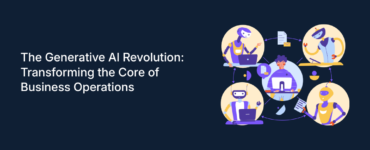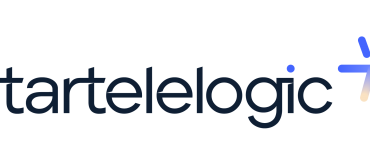Imagine visiting a website and getting instant, helpful support in your native language, every single time. For businesses looking to connect with a global audience, that seamless experience is no longer a dream—it’s a requirement. If your company interacts with customers from different corners of the world, your digital support system needs to speak their language.
This is the core idea behind building an AI Chatbot for Multiple Languages. It’s about more than just translating words; it’s about understanding context, regional expressions, and cultural nuances to provide genuinely personal support. It transforms your customer experience from merely functional to truly excellent, no matter where your user is located.
Let’s explore the cutting-edge features, the measurable Benefits of Multilingual Chatbots, and a straightforward guide on How to Build a Multilingual Chatbot for your business.
The Strategic Edge: Why Multilingual AI is Non-Negotiable
The chatbot market is booming, with the global size projected to reach over $27 billion by 2030, reflecting a CAGR of over 23%. This massive growth is fueled by a demand for efficiency and, critically, for better customer experience across borders.
Here is why ignoring language is ignoring revenue:
1. The Global Customer Preference and Loyalty Boost
Customers overwhelmingly prefer to engage with brands in their native language. A striking 75% of customers say they are more likely to buy again when support is available in their native tongue. Furthermore, 70% of end-users report feeling more loyal to businesses that provide native language support. By implementing an AI Chatbot for Multiple Languages, you immediately establish a deeper, more trusted connection, reducing churn and creating long-term advocates.
2. Operational Efficiency and Clear ROI
The most compelling business case for Multilingual Chatbot Development is the return on investment (ROI). Chatbots can handle up to 80% of routine inquiries, leading to dramatic reductions in labor costs. For many leading implementations, this translates to an average ROI of 148% to 200% over an 18-month period. Instead of needing dedicated 24/7 human staff for dozens of language pairs, the chatbot provides instant, automated resolution across all time zones. This 24/7 availability is key, as 62% of customers prefer engaging with a digital assistant rather than waiting for a human agent.
3. Accelerated Global Market Penetration
Expansion into new markets is traditionally slowed by the need to hire and train local support teams. A multilingual bot eliminates this bottleneck. By integrating a chatbot that can communicate effectively in languages like Spanish, Mandarin, or Arabic, companies can achieve much faster market entry. The bot ensures that potential customers—of which more than half of all online users prefer content in a language other than English—are immediately engaged and understood, driving a direct increase in conversion rates in new territories.
Essential Features: Moving Beyond Simple Translation
A premium AI Chatbot for Multiple Languages cannot rely on basic, real-time translation APIs, which often sound awkward and miss nuance. True success requires sophisticated features:
1. Deep Cultural Localization (The Critical Difference)
Localization is the art of adapting the experience to the local culture, which is far more complex than translation. A localized bot must:
- Adjust Tone and Formality: Using the formal Usted in Latin American Spanish when appropriate, versus the informal Tú used in other contexts.
- Handle Regional Dialects & Slang: Recognizing that ‘lift’ (UK English) and ‘elevator’ (US English) mean the same thing, or recognizing various regional idioms in a language like German or Chinese.
- Format Data: Automatically displaying pricing in the correct currency, and using local date formats (e.g., DD/MM/YYYY vs. MM/DD/YYYY).
2. Intelligent Intent Recognition (NLP)
The bot must use advanced Natural Language Processing (NLP) models trained on diverse, multilingual data. The goal is to separate the intent (e.g., “I want to return an item”) from the literal wording, even if the user is mixing languages or using complex phrasing. This ensures a high level of accuracy, which is essential, as 74% of internet users prefer interacting with a chatbot for simple questions when they are sure to get an accurate answer.
3. Integrated, Centralized Knowledge Base
To maintain consistency, all language versions of the bot should draw from a single source of truth. This centralized knowledge base stores core answers once and uses professional localization tools to generate the high-quality, culturally appropriate versions for all target languages. When the central policy changes, all language variants update simultaneously, preventing errors and providing a consistent global brand voice.
How to Build a Multilingual Chatbot: Your Strategic Roadmap
Step 1: Strategic Planning and Data Analysis
- Analyze Traffic and Tickets: Identify the top 3-5 non-English languages driving the most customer traffic and support tickets. This data-driven focus ensures the fastest ROI.
- Define Success Metrics: Set measurable, language-specific goals, such as achieving a 70% containment rate (the percentage of queries solved without human intervention) for German users within six months.
Step 2: Choose a Cross-Lingual Platform
Select a modern conversational AI platform (often based on Large Language Models or LLMs) that is designed for cross-lingual performance. These systems can often infer the intent in a low-resource language by leveraging training data from a high-resource language, which is vital for efficient Multilingual Chatbot Development.
Step 3: Localization, Not Just Translation
This is the most critical step. Hire or contract native speakers for each target language to review the chatbot’s script. They are responsible for ensuring the tone is correct and that no common idioms or phrases cause offense or confusion. The success of the bot hinges on this final “human touch” review.
Step 4: Rigorous Quality Assurance (QA) and Training
Test the bot extensively using a variety of user queries, including common misspellings and local slang in each language. Post-launch, continuously monitor your First Contact Resolution (FCR) rates per language. A drop in FCR for a specific language signals a gap in the bot’s training data that needs immediate correction.
Also Read: https://bit.ly/47JhgBs
Conclusion
In a world that is always connected, your business must be ready to communicate with anyone, anywhere. By committing to Multilingual Chatbot Development, you are not just adopting a piece of technology; you are building an inclusive, efficient, and globally competitive customer service engine. This strategic investment is the key to unlocking true global growth, fostering deep customer connections, and future-proofing your business in the digital age.
Frequently Asked Questions (FAQs)
Q1: What is the biggest challenge in Multilingual Chatbot Development?
The most significant challenge is achieving deep cultural localization, which goes far beyond literal translation. It requires training the AI to understand and respond using appropriate regional slang, idioms, tone, and cultural contexts. A common pitfall is using a one-size-fits-all translation, which can lead to awkward responses and damage customer trust in non-English markets.
Q2: How quickly can a company expect to see an ROI from Multilingual Chatbot Development?
Most businesses see early positive results within 60 to 90 days of deployment. These include fewer support tickets and faster response times. Full ROI usually appears within 8 to 18 months. It’s driven by lower labor costs and higher customer loyalty, which boost sales. Leading implementations have achieved ROI increases of 148% to 200%.
Q3: Should my company use real-time translation tools or invest in custom Multilingual Chatbot Development?
For critical customer-facing functions, always invest in custom development and training. Real-time translation is prone to errors, misses crucial context, and cannot handle complex inquiries consistently. Custom Multilingual Chatbot Development ensures the bot is trained on region-specific data, guaranteeing high accuracy, consistent brand voice, and a professional level of service necessary for retention and conversion.
Q4: Which languages should we prioritize when starting our Multilingual Chatbot Development project?
Prioritize languages based strictly on data analysis. Identify which languages your largest website visitors or customers speak. Check the regions that generate the most support tickets. Start with the top 3–5 high-impact languages. This approach helps you meet the biggest needs first and ensures a faster return on investment.
Q5: Can a Multilingual Chatbot Development project assist in sales and lead generation?
Absolutely. The bot’s ability to communicate instantly in a customer’s native language removes friction at the critical point of purchase. The bot can qualify leads with key questions, give instant product or shipping answers to reduce cart abandonment, and offer personalized recommendations—helping businesses boost sales by up to 67%.



